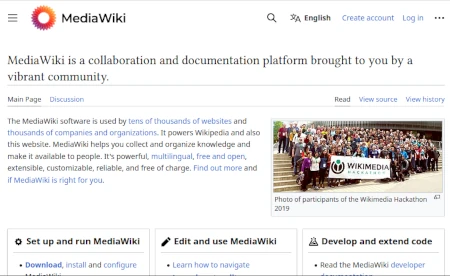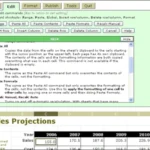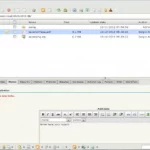Last Updated on: 1st July 2025, 05:29 pm
Web site: www.semantic-mediawiki.org
Category: Network
Subcategory: Wiki
Platform: Cross-platform
License: GNU GPL
Interface: Web-interface
Wikipedia: Semantic MediaWiki
First release: 2005
Semantic MediaWiki (also: SMW) – a free, open-source extension to MediaWiki – the wiki software that powers Wikipedia – that lets you store and query data within the wiki’s pages.
Semantic MediaWiki is also a full-fledged framework with many spinoff extensions that can turn a wiki into a powerful and flexible knowledge management system. All data created within SMW can easily be published via the Semantic Web, allowing other systems to use this data seamlessly.
Semantic MediaWiki turns MediaWiki into a knowledge management platform with query and export capabilities.
It helps to search, organise, tag, browse, evaluate, and share the wiki’s content. While traditional wikis contain only text which computers can neither understand nor evaluate, SMW adds semantic annotations that allow a wiki to function as a collaborative database. Semantic MediaWiki was first released in 2005, and currently has over ten developers, and is in use on hundreds of sites. In addition, a large number of related extensions have been created that extend the ability to edit, display and browse through the data stored by SMW: the term “Semantic MediaWiki” is sometimes used to refer to this entire family of extensions.
Goals:
– Automatically-generated lists. Lists and tables are a natural way to view information at a glance. In some cases, non-semantic wikis contain human-generated lists; Wikipedia itself has thousands, like “List of metropolitan areas in Spain”. These lists are prone to errors, since they have to be updated manually. Furthermore, the number of potentially interesting lists is huge, and it is impossible to provide all of them in acceptable quality. In SMW, lists are generated automatically. They are always up-to-date and can easily be customised to obtain further information.
– Visual display of information. The various display formats defined by additional extensions, such as Extension “Semantic Result Formats” and Maps (formerly Semantic Maps), allow for displaying of information in calendars, timelines, graphs and maps, among others, providing a much richer view of the data than simple lists and tables would.
– Improved data structure. MediaWiki wikis tend to make heavy use of categories for structuring data. While these are generally helpful, consider the category on Wikipedia called “1620s births”; if the information in these pages were stored using SMW, these categories could be replaced by simple semantic values, reducing the need for a complex classification system. In addition, if semantic markup within the wiki is stored within templates, otherwise known as semantic templates, a wiki can easily gain a solid data structure. And the Page Forms (formerly Semantic Forms) extension lets administrators create forms for adding and editing the data within semantic templates, thus making the addition of semantic information even easier and more straightforward than using regular wiki text.
– Searching information. Individual users can search for specific information by creating their own queries, supported via extensions like Extension “Semantic Drilldown” and Page Forms (formerly Semantic Forms).
– External reuse. Data, once it is created in an SMW wiki, does not have to remain within the wiki; it can easily be exported via formats like CSV and JSON. This enables an SMW wiki to serve as a data source for other applications, or, in the case of enterprise usages, to take over the role that a relational database would normally play. Through the use of the Extension “External Data” extension, SPARQL, and other tools, one SMW-based wiki can even use the data from another, eliminating the need for redundancy between wikis. You can also query SMW’s data from outside the wiki, via the API or an RDF triplestore.
– Integrate and mash-up data. Data contained in an SMW installation does not have to be an isolated store of information. Extensions such as Extension “Data Transfer” and Extension “External Data” empower you to integrate external data (coming e.g. from legacy systems, web services or linked data sources) and interrelate it with existing semantic data in the wiki. Thus, an SMW-powered wiki can serve as a central information hub in an IT landscape.
Semantic MediaWiki requires MediaWiki and its dependencies, such as PHP





